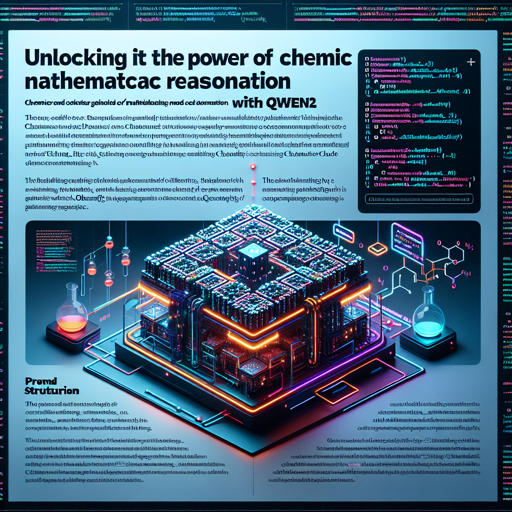In the ever-evolving landscape of artificial intelligence, the ability to generate code with a focus on chemistry and mathematical reasoning is a game changer. Today, we explore the experimental model developed by dbands, built on the foundation of the Qwen2 architecture. This model operates under fine-tuning from the dbands/tantrum_16bit and has the potential to generate functioning code across diverse use cases, particularly in the realms of chemistry and mathematics.
Getting Started with the Qwen2 Model
To maximize the capabilities of this model, you’ll want to utilize the specific prompting structure to gather meaningful responses. Below is the prompt format you should follow:
alpaca_prompt = """Below is an instruction that describes a task, paired with an input that provides further context. Write a response that appropriately completes the request.### Instruction:{}### Input:{}### Response:{}"""When you input the instruction and context, the model will intelligently generate a response that aligns with the request. But wait, there’s more! Let’s delve into how you can use this model effectively across different projects.
Practical Applications for Researchers
- Generating chemistry code compatible with RDKit for molecular analysis.
- Creating plans for coding that can simulate chemical reactions.
- Developing mathematical reasoning algorithms for various applications.
Understanding Model Limitations
While this model shows great promise, it is critical to note its experimental nature. Here are some important considerations:
- The model may produce hallucinated outputs, especially in chemistry, where it tends to make up SMILES (Simplified Molecular Input Line Entry System) combinations.
- Due to its ongoing training, the results may not be reliably used in production environments; it’s primarily intended for research.
- Changes are ongoing for better adaptability, aiming to enhance its chemical coding capabilities using limited datasets.
Troubleshooting Insights
If you encounter challenges while working with this model, consider the following troubleshooting tips:
- Ensure that you are providing clear and relevant instructions along with adequate context.
- Experiment with different input formats to gauge how variations influence the output.
- For complex chemical tasks, remain aware of the possible inaccuracies in generated SMILES strings.
For more insights, updates, or to collaborate on AI development projects, stay connected with fxis.ai.
The Future of AI in Research
At fxis.ai, we believe that such advancements are crucial for the future of AI, as they enable more comprehensive and effective solutions. Our team is continually exploring new methodologies to push the envelope in artificial intelligence, ensuring that our clients benefit from the latest technological innovations.
Conclusion
The Qwen2 model developed by dbands stands as a hallmark of potential in the AI landscape. Embracing both creativity and analytical thought, this model invites researchers to explore innovative solutions while remaining cautious about its current capabilities. The future looks bright for AI-driven coding solutions across chemistry and mathematics!

